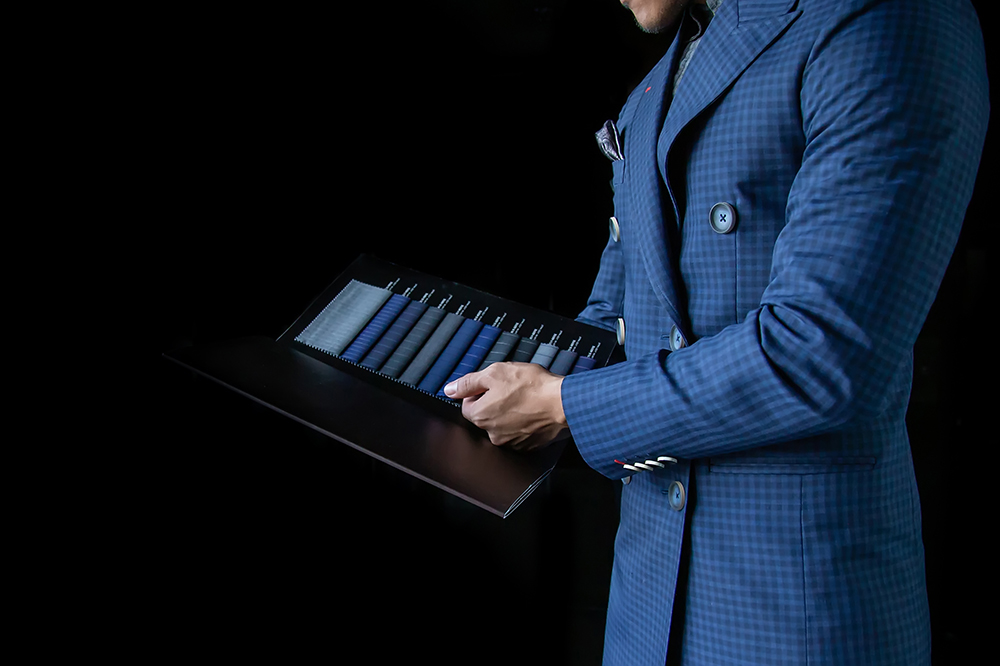Have you ever slipped into a garment tailored just for you? There’s nothing quite like it. From the beauty of the design to the feel of the texture, both on the surface and underneath, all aspects lend itself to looking your very best. An important element to a made-to-measure outfit is the cut of the garment — how well does it fit? A custom-made piece of clothing will make you feel and look good, adding to your confidence, poise, and refinement.
The History
The art of tailoring has existed hundreds of years dating back to the early medieval period (5th to 10th centuries). Well before sewing machines came into being, people handmade all clothing. Each tailor had a unique stitching pattern and signature that was often a closely guarded secret. It was an artful and noble line of work to be in because everyone, irrespective of social standing, had their clothes sewed.
The word “tailor” appeared first in the Oxford Dictionary in 1297 (the late 13th century) and is derived from the French word “tailler” which means “to cut”. In Latin, the word was “sartor” which means someone who patches or mends garments, and the English derivative, “sartorial” is related to tailored garments.
Bespoke Tailoring in England
The earliest tailors came from Europe, as this novelty only diversified in Western Europe between the 12th and 14th centuries. Clothes were made at home, often with a single piece of cloth, and the sole purpose of a garment was to conceal the body. Individual style was of no interest to either the maker or wearer.
However, by the 15th and 16th centuries (i.e. the Renaissance period), garments developed from one of necessity to a representation of self-expression. Single-garment loose clothing became shorter and form-fitting to resemble the shape of the wearer. Personal style rose, as did an understanding of how specific designs worked better on certain body types. Bespoke tailors emerged customising garments using a variety of skills and creativity to suit the wearer’s requirements. England became the earliest home of such tailors, giving way to signature style and ever-changing fashion trends.
At the time, tailors made different outer garments like cloaks, coats, breeches and more. They used stiff linen and canvas for interlining to give shape, along with horsehair cloth and cardboard stiffened with whalebone for structure. Wool or cotton padding was used to even out asymmetrical body shapes. Luxury clothing had satin or fur lining to keep the individual warm. In the 19th century, wool was the primary material used in men’s clothing. Why? At the start, wool showed masculinity and patriotism but soon became very fashionable, replacing the silks and velvets of the previous century.
The relationship of master and apprentice
It was in the late 11th century that King Henry I gave royal privileges to Taylors of Oxford, thus legitimizing tailoring as an occupation. That propelled tailor masters to take on apprentices to teach them their methods. They learned everything from moulding fabric to the shape of the wearer’s body to developing their own distinctive styles and designs. Creativity and signature style was as important as a fantastic fit, and if the tailor was exceptional at his job, it gave way to high demand.
This encouraged master tailors to take in more apprentices and staff. Masters tasked each tailor with specific roles: some staff, often journeyman tailors, did the cutting, others the moulding, while apprentices had to keep the shop tidy. The relationship was completely experience-based, and no manuals existed. But, in 1796, The Taylor’s Complete Guide, the first English-language manual on tailoring was released, paving the way forward for others to join its ranks. In 1889, History of the Art of Cutting by E.B. Giles was published, encapsulating the evolution of 19th-century techniques.
Measurements
Throughout history, the systems used for measurements have completely changed. Tailors initially developed complex systems to measure, ensuring the wearer had freedom of movement. Irrespective of the systems developed, ultimately the keen eye of a master tailor-made the difference. He’d notice the subtleties of a client’s posture, disposition and anatomy, and make allowances for a bulging stomach or uneven shoulders.
One manual, L’Art du Tailleur by de Garsault (1769), details how the author used a strip of paper for taking measurements. The system included creating marks in the strip to measure the breadth of the back and the length of the arm. The modern tape measure was introduced in 1800, initially joined with a compass, ruler, and tracing paper.
Savile Row
As with most things, fashion and tailoring also evolved. The 19th and 20th century saw the formation of fully equipped tailoring establishments. At the top end of the scale were establishments on Savile Row and Bond Street of London’s West End, centred around the elite. Eventually, Savile Row tailoring transitioned from serving only the British aristocracy to include a more international clientele like American financiers and celebrities. What makes a Savile Row suit unique is how structured they are. Tailors use shoulder padding and more canvas, with a focus on straight, angular lines. They’re harder and sharper than any garment made elsewhere.
In the 1980s, a new generation of British designers merged the flawless cut and construction of traditional tailoring with that of haute couture. Alexander McQueen, among those who trained on famed Savile Row, incorporates this emphasis on structure and material into his couture womenswear.
Although custom tailoring plays a small part in contemporary menswear, it still carries prominence as part of a well-dressed man’s arsenal. While the suit has advanced and changed with times, it remains a classic form of attire. People will continue to turn to a tailor for made-to-measure suits and clothing for that ideal fit and structure.






